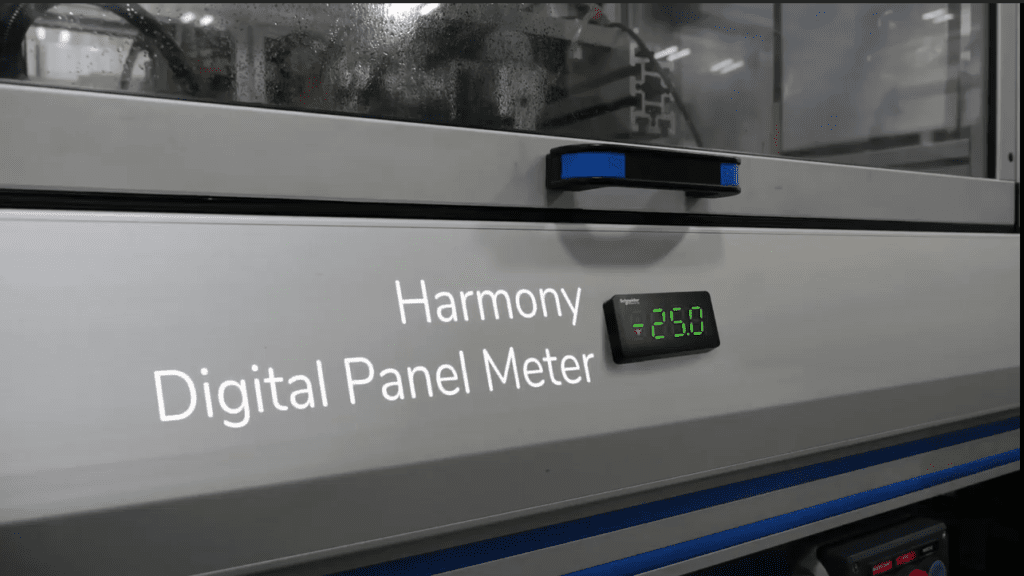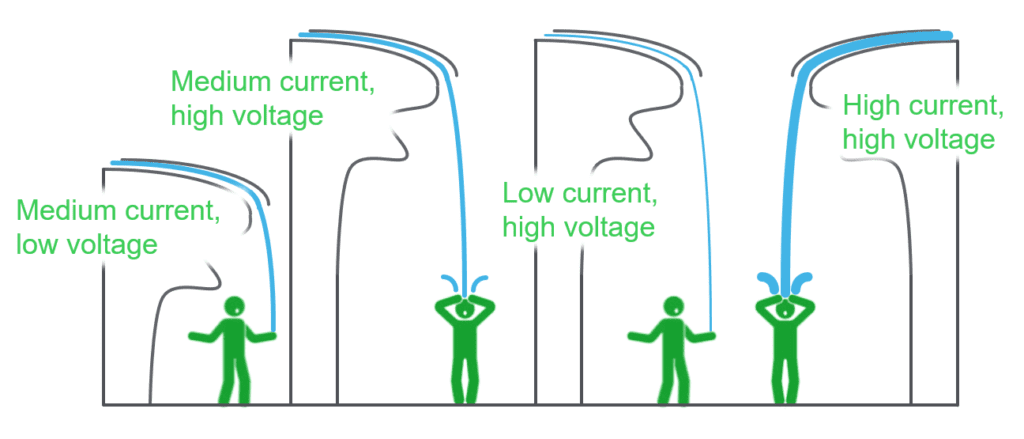 In the small word of Industry, a display meter is an interface to simply read key values and better react to avoid security issues or profitability loss.
In the small word of Industry, a display meter is an interface to simply read key values and better react to avoid security issues or profitability loss.
Whether on simple or complex machines, customers take measurements or monitor attributes in their applications such as current, voltage, speed, temperature, humidity, flow, level or pressure. They have a requirement to be able to read the values. Display meters are intended for this purpose. A display meter is a product that shows an input signal, either in the analog (good old needle-like pointer) or digital (LCD or LED display) format.
Display products have evolved in technology over the years, with the most advanced range being the HMIs (Human Machine Interfaces) with 2 main functions: display all the attribute values and accept user instructions to control the overall equipment. Despite that, there is still an existing market for the basic display products because customers are driven by the need of a simple display showing the attributes and a limited budget to spend on the product range.
Basic Displays
Additional benefits related to basic displays can be also found in installation with a 22.5mm panel cutout. Indeed, Panel Builders and OEM will always opt for a standard round hole rather than a customized rectangular cutout.
Traditionally, these displays are having analog input with a 4…20 mA current loop which has become the dominant standard in the industry because using current as a means of conveying process information is very reliable. To better understand what a 4…20 mA current loop is, let’s start with the Ohm’s law:
The voltage (V) is equal to the current (I) multiplied by the resistance (R). And to better understand, let’s build an analogy with water. The direct current (or flow of electrons) can be compared to a river flow, while the voltage could be associated to a mountain slope that give the pressure and finally, the resistance might be related to the river curves or rocks constraining the flow.
A current loop requires voltage (thanks to power supply) to drive the current. Current circulate through the loop, passing through each load. Every element in the loop either provides voltage, or has a voltage drop. However, the current is the same everywhere in the loop. This is the critical principle of the 4…20 mA loop.
A typical 4…20 mA current loop application is a simple and cost-effective solution.
- A sensor measures a process variable.
- A transmitter translates that measurement into a current signal between 4 and 20 milliamps.
- A signal is produced by a source of power. It must output a DC current (the current is only flowing in one direction). Power supply voltage must be at least 10% greater than the total voltage drops of the attached components.
- The loop is made by a wire which is a source of resistance that causes a voltage drop on the system. It is normally not a concern, as the voltage drop of a section of wire is very small.
- A receiver displays or performs an action with that signal. When it is a screen, it can be combined with devices that automatically do something with that information (actuators, valves, etc.).
 Why this technology is the best solution in simple applications where few loops are required
Why this technology is the best solution in simple applications where few loops are required
First, it is the simplest option to connect and configure. Compare to other signals, less wiring and connections are needed, initial setup costs are then reduced. It is the best choice to make long distances, as current does not degrade over long connections like voltage. Lastly, this current loop has few sensitivity to background electrical noise.
To finish, let’s focus on the benefits of a 4…20 mA vs. 0…20 mA current loop. It would be logical to use a scale starting from zero, but this is not as good as it seems for many reasons. A too small value to treat would make it difficult to distinguish lower ranges. It would also be harder to detect a system failure if the signal drop to “real” zero. One more issue is inherent to products conception that could reach a 0…20 mA current loop and remain accurate because it would considerably increase its cost. Last but not least, a 4…20 mA current loop keeps enough flow of current for loop-powered devices.
Having explained that, it is easier to understand why, at Schneider Electric, we decided to introduce our new XBH Digital Panel Meter into our Harmony range of Control devices and how it works.
If these explanations sharpened your curiosity, please visit our Schneider Electric website for additional information on Digital Panel Meter red LED display or Digital Panel Meter green LED display.






